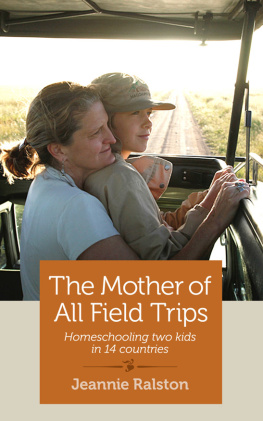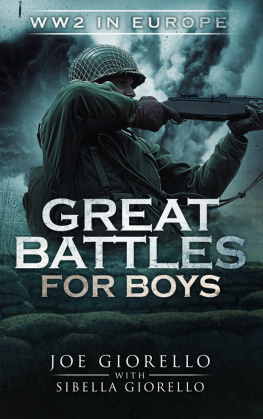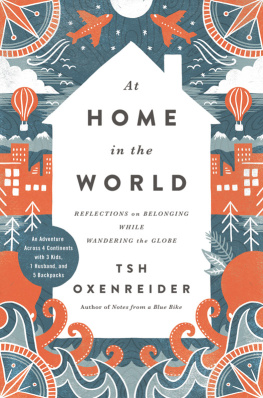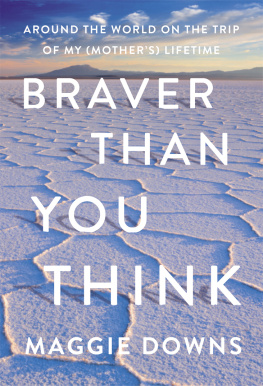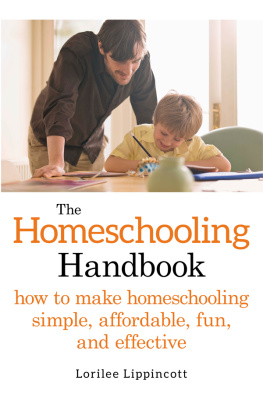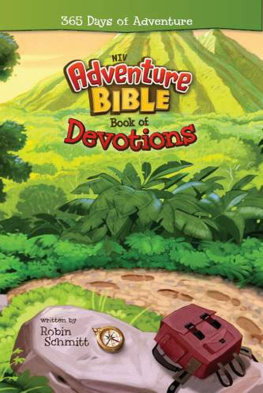Thanks for downloading a Shebook.
click here, or visit us online at shebooks.net.
All rights reserved. No part of this book may be reproduced, scanned, or distributed in any printed or electronic form without permission.
The Mother of All Field Trips
Homeschooling two kids in 14 countries
It happened the 23rd time our driver passed a car on a curving two-lane road in Chinas mountainous Western Sichuan Province. The thing I feared most.
The previous 22 times, Id imagined a car or truck barreling along in the opposite direction at just the moment we were coming around in our Mitsubishi Pajero. And then, horribly, there it wasin all its red metal reality.
Sphincter! I shouted, which crudely enough, is my go-to word whenever an accident seems imminent. (I have teenage sons, and it gets their attention.) Our drivera young Tibetan named Tian Huswerved to the right and deftly pulled the Pajero into the correct lane just in time, somehow managing to avoid overcorrecting, which would have sent us off the steep cliff on the right side.
Are you all right, Mom? asked my son Gus, 15 at the time, who was sitting next to me in the backseat. My younger son Jeb, then 13, was on my other side, and my husband, Robb, was up front, next to the driver. When I could speak again, I said, Yes, except I think my stomach and throat have switched places.
And this was only day one on the 1,332-mile Sichuan-Tibetan Highway, which runs between Chengdu and Lhasa. We were crossing the 200 miles between Chengdu and Kangding, which took nine hours because of traffic jams and road construction. Most Chinese drivers have only learned to operate cars in the past ten years, which exacerbates the dangers of this road. People pass on pavement that folds like ribbon candy down a mountainside; they speed along stretches that run high above gorges without shoulders or guardrails.
Unfortunately, arriving in Kangding did nothing to lift my mood. I would have felt better if the town had had a modicum of Tibetan character or if the mountain backdrop had been graceful or verdant, but Kangding was a dingy, sooty modern city. Travel blogs and China experts Id consulted said that this area of the Western Sichuan Province was as beautiful as Tibet, and easier to reach. Easier, my sphincter.
As soon as we got to our hotel room, Jeb began throwing upsick, most likely, from the ride. Once Id gotten him hydrated and into bed, I pulled out my laptop and was surprised to find that the Wi-Fi worked. It would have been better if it hadnt. While checking to see how many miles wed be driving the next day to reach the town of Tagong, I came across a website that called the Chengdu-Lhasa highway the fifth deadliest road in the world. I let those words sink in for a minute: Fifth. Deadliest. In the world.
How did I miss this important fact while planning the trip? Now I felt as if I might need to stick my head down the toilet. I tried to summon strength and serenity; I tried to assure myself that our travel angels had proven themselves on our other trips over the yearswhen a hungry lioness circled our open-top Land Cruiser in the Serengeti, when our plane from Paris to Dallas made an emergency landing in Iceland, when we toured Egypt two weeks after the Arab Spring had driven Hosni Mubarak from office. But in that remote Chinese city, I couldnt shake the idea that this time Id really pushed it too far. Maybe I had become too selfish about pulling my children into my dream.
Some people fantasize about becoming rich or famous, or rising to the top of their profession. But my goals were formed by something I had read in high school: winners in life were not the people who died with the most money but with the best stories. My overriding desire since then has been simple. To have an interesting life. Hence my career as a journalist, which allows younay, forces youto dive into other peoples lives and have experiences worth writing about. While I was backpacking around Europe in college, I also realized that traveling was key, and that included marrying someone who felt the same way.
I got my wishand then some. In the early part of our marriage, Robb, a photographer for National Geographic, was on the road sometimes 300 days a year doing things that normal people didnt dolike going down into illegal coal mines in rural India or out on the ocean in rickety boats with Senegalese fishermen. I was often able to join him for the less dangerous exploits, such as climbing a steep mountain in Nepal to get advice from a blind Buddhist monk and visiting a resort in Cuba for Castros government officials (we ended up there by mistake and were miraculously allowed to stay and, even more miraculously, to leave).
But after our two boys arrived, within two years of each other, my adventure life was severely squelched. I had a long stretch when I didnt even want to travel. I was barely keeping my ears above diaper boxes, taking care of two small children; I couldnt imagine how I would manage without my routine and the comfort of my own home.
That changed, though, when the boys were eight and six and the demands of toddlerhood were behind us. I started to feel the old familiar itch. Surely being a mom shouldnt mean having to give up my entire former life. Robb felt the same way, but we werent ready for anything too wild, so we decided just to set up shop nearby in Mexico for a while. It was exotic, and the boys could get fluent in Spanish, but it was still driving distance from home and family.
The plan seemed like a fairly tame way to reclaim a bit of adventure in our lives, but given some of the reactions we got when we briefed family and friends, you would have thought we were joining a cult. Didnt I know there was a drug war going on in Mexico? Hadnt I heard about the rash of kidnappings? My mother had made clucking comments about our parenting decisions before, but she thought taking the kids to what she considered a third-world country was a whole new level of crazy. Nothing better happen to them, she warned.
After we settled into the gorgeous mountain town of San Miguel de Allende, we laughed about the fact that some people had called us brave for coming here. San Miguel has to be one of the most sublime places on earth. Theres culture everywhere you turnfood, festivals, religion, artand just walking around is a feast for the eyes, with sherbet-and-spice-hued colonial architecture lining cobblestone streets. Thanks to its large expat population, the town is also packed with services to make life easier for foreigners.
The boys attended a bilingual school and adapted quickly to a new culture. They made friendsboth Mexican and other expatsplayed soccer, embraced new traditions such as Day of the Dead and Christmas posadas. But after four years, we were told by folks with older kids that we should consider returning to the United States for middle school; the combination of teenage boredom and unusually easy access to unhealthy substances (alcohol, cigarettes, and harder stuff) was just too much of a potential snare.
Still, after four years of Mexicos languid pace, I wasnt quite ready for fast-and-frenetic America again. Plus, we were moving back after the start of a new school year, so we werent eager to throw the boys into the middle of unfamiliar territory at ages 10 and 12.
Thats when the idea appeared. Why not keep the boys out of school for a year and travel instead, with Robb and me essentially homeschooling them? Robb and I could be explorers again, and the kids would get the kind of experiential learning Id always believed in. When they were small, I was constantly schlepping them on one field trip or anotherto organic dairy farms or aircraft carriers or Civil War battlefields. This time, I could also make use of Netflix, which has great documentaries on just about every subject imaginable. And in Austin, where we based ourselves, there were tutors for the heavy lifting: math and science. Plus, it certainly wouldnt be any more expensive than the $20,000-a-year tuition wed saved for the kids to go to private school. So we decided to raid that fund and maybe supplement it with some good magazine assignments for Robb and me throughout the trip.

